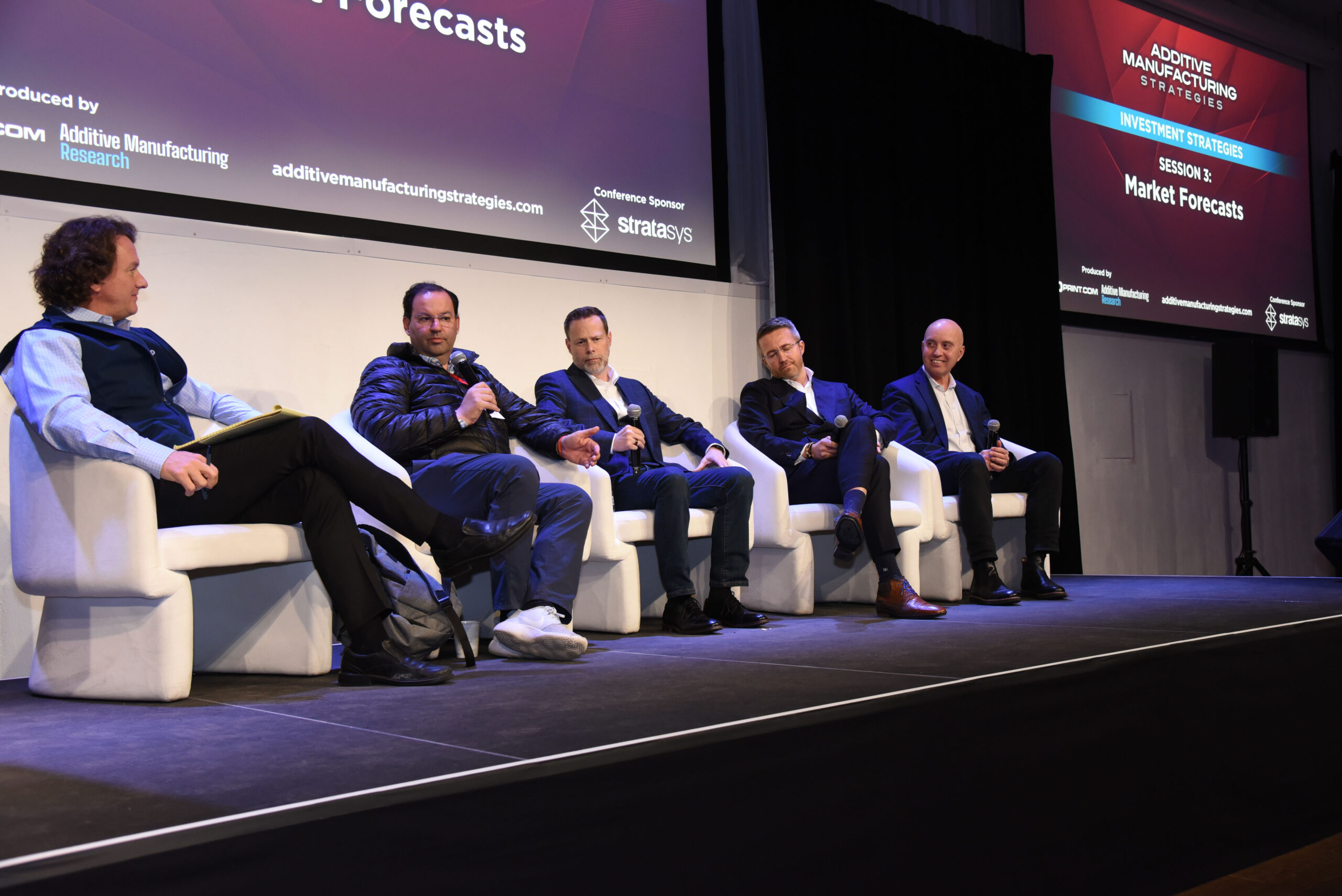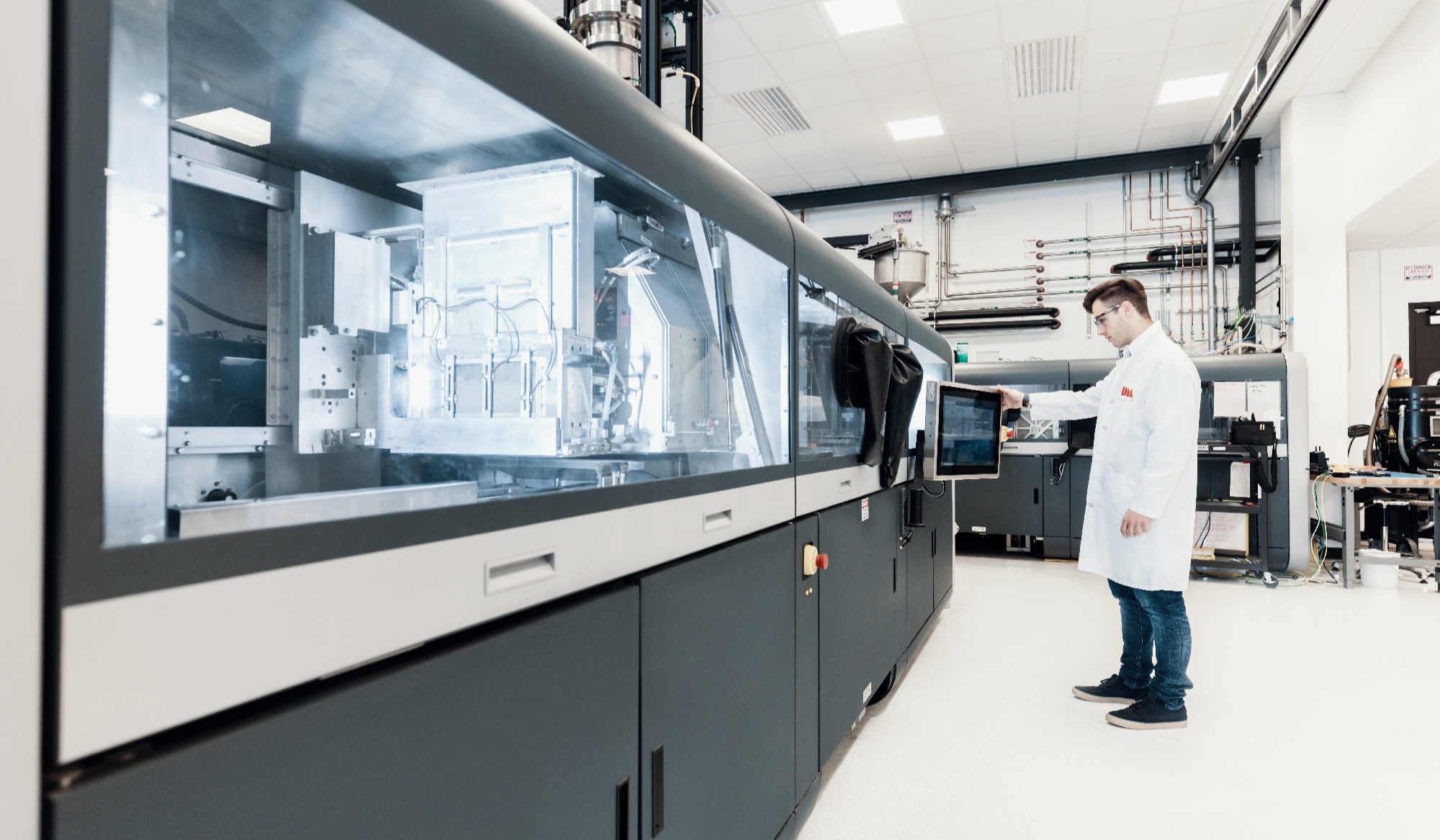Desktop Metal (NYSE: DM) reported its financial results for 2023, showing a year of financial recalibration. Revenues dipped compared to the previous year, yet there was an improvement in net losses. Despite a 25% decrease in the rate of cash consumption compared to the previous year, the company continues to burn cash at a concerning pace. Nonetheless, there were operational highlights, including strong demand in key technology sectors like production binder jet systems, healthcare dental applications, gigacasting for automakers, and a record level of recurring revenue.
Amid a challenging economic landscape, Desktop Metal revenues dropped to $52.3 million in the fourth quarter from $60.6 million the previous year. Despite the dip, the company noted a 22% sequential increase from the previous quarter. For the same period, Desktop Metal reported a net loss of $174.5 million, which includes a goodwill impairment charge of $110.5 million.
Market Pulse
Cantor Fitzgerald analyst Troy Jensen noted that Desktop Metal’s Q4 results surpassed expectations with revenues of $52.3 million, showing strong sequential growth but a year-over-year decline. Also, the expert said there is concern over the company’s ongoing cash burn despite its cost-cutting measures, including a new $50 million cost reduction plan and an additional $20 million cut announced during the Q4 earnings call. While Jensen anticipates that Desktop Metal will reach adjusted EBITDA breakeven in the second half of 2024, he expects the cash burn to continue throughout the year. The analyst highlighted a strategic shift in the company’s focus from metal powder binding to dental and sand-casting applications and mentioned potential delays in commercializing the P-50 platform. Despite these challenges, Jensen and Cantor find the valuation attractive and see the industry ready for consolidation, expressing optimism for Desktop Metal’s journey to profitability.
Desktop Metal’s adjusted EBITDA, a measure of profitability excluding certain expenses, was a negative $9.2 million, improving by 56% year-over-year and marking the company’s strongest quarterly performance. However, the gross margin stood at a negative 32%, affected by one-time restructuring costs, with a slightly better adjusted gross margin of 34%, a 39.9% improvement from the previous year.
“We believe we are now positioned at or near breakeven in 2024, assuming no material growth. As further proof of cost reduction progress, this quarter’s cash consumption from operations was down 62% compared to $56.3 million consumed in the first quarter of 2022. As a reminder, the first quarter of 2022 was the last full quarter of results before commencing our cost reductions with continued improvement throughout,” said Cole.
The company also reduced its quarterly operating expenses by 58% year over year and saw its adjusted operating expenses decline for the seventh consecutive quarter to $31.6 million. These figures further reflect Desktop Metal’s aggressive cost-cutting strategies.
Vision and Ventures
CEO Ric Fulop pointed out, “We’re in the final stages of our restructuring to get profitable on the cash we have. As part of this effort, our process is to aggressively prioritize our lines of business based on time to cash flow, given the headwinds our industry faced when rates went up. Additive manufacturing is a growth industry, and it’s grown double digits annually over the past two decades to about $18 billion a year, apart from very short periods in 2008 and 2020. From 2015, when we started Desktop Metal, through 2022, our core technology, binder jet, grew at a compounded annual growth rate of about 40%. While we saw growth slow in 2022 as rates went up, we expected growth to come back in ’23, but learned together with our peers the effect of higher cost of capital and project delays on new technology.”

AMS 2024 CEO Panel (left): Troy Jensen, Ric Fulop, Sam O’Leary, Brad Krueger, and Yoav Zeif. Image courtesy of Ashley Alleyne/3DPrint.com.
In the same earnings call, Fulop further discussed Desktop Metal’s prospects and the industry’s outlook. He recognized the industry’s flat performance in 2023 but anticipated a shift towards double-digit growth, driven by increasing demand in defense, aerospace, and healthcare. Fulop highlighted the company’s record recurring revenue as a sign of strong market adoption and noted the company’s record recurring revenue of $65 million in 2023, a 29% increase over the previous year, which now represents 34% of revenue, up from 24% from 2022. He also pointed out the success of the printed castings business, emphasizing its growth potential and significant market opportunity. Despite not achieving the EBITDA target for the previous year, Fulop still said he was confident in the company’s strategy and potential for profitability in 2024.
Financial Recalibration
Looking ahead, Desktop Metal anticipates 2024 revenues between $175 and $215 million, with adjusted EBITDA expected to range from a loss of $30 million to a loss of $10 million, aiming for breakeven in the second half of the year.
Fulop expressed pride and caution, acknowledging the company’s improved operational performance despite falling short of their internal EBITDA target. However, he told investors that Desktop Metal has made significant strides in application adoption, particularly in binder jet technology, and now boasts an impressive roster of high-end clients in various sectors. The company has become a key player in the aerospace and defense industries, with SpaceX using its printed castings in the Raptor engine and its technology to reach the moon aboard the intuitive lander. Furthermore, Desktop Metal’s parts are used in Airbus and Boeing’s advanced airliners, including for critical components like wing and winglet tooling. In the automotive sector, giants like Tesla and Toyota have adopted its technology for manufacturing processes. The company’s technology is also integral to the production of fuel systems for the F-35 fighter jets, managed by Eaton, and is used in Rolls Royce Trent and Pratt & Whitney jet engines.
Although management highlighted its strategic partnerships, new product launches, and ongoing investments, these advances contrast with the company’s financial picture, which shows a mix of losses and ongoing restructuring. It’s a challenging path ahead as companies deal with market pressures, underscored by the need to align with the most profitable and promising applications for additive manufacturing.
Subscribe to Our Email Newsletter
Stay up-to-date on all the latest news from the 3D printing industry and receive information and offers from third party vendors.
You May Also Like
Gorilla Sports GE’s First 3D Printed Titanium Cast
How do you help a gorilla with a broken arm? Sounds like the start of a bad joke a zookeeper might tell, but it’s an actual dilemma recently faced by...
Nylon 3D Printed Parts Made More Functional with Coatings & Colors
Parts 3D printed from polyamide (PA, Nylon) 12 using powder bed fusion (PBF) are a mainstay in the additive manufacturing (AM) industry. While post-finishing processes have improved the porosity of...
$25M to Back Sintavia’s Largest Expansion of Metal 3D Printing Capacity Since 2019
Sintavia, the digital manufacturing company specializing in mission-critical parts for strategic sectors, announced a $25 million investment to increase its production capacity, the largest expansion to its operations since 2019....
Velo3D Initiates Public Offering in a Bid to Strengthen Financial Foundations and Drive Future Growth
Velo3D (NYSE: VLD) has been among a number of publicly traded 3D printing firms that have attempted to weather the current macroeconomic climate. After posting a challenging financial report for 2023,...
































